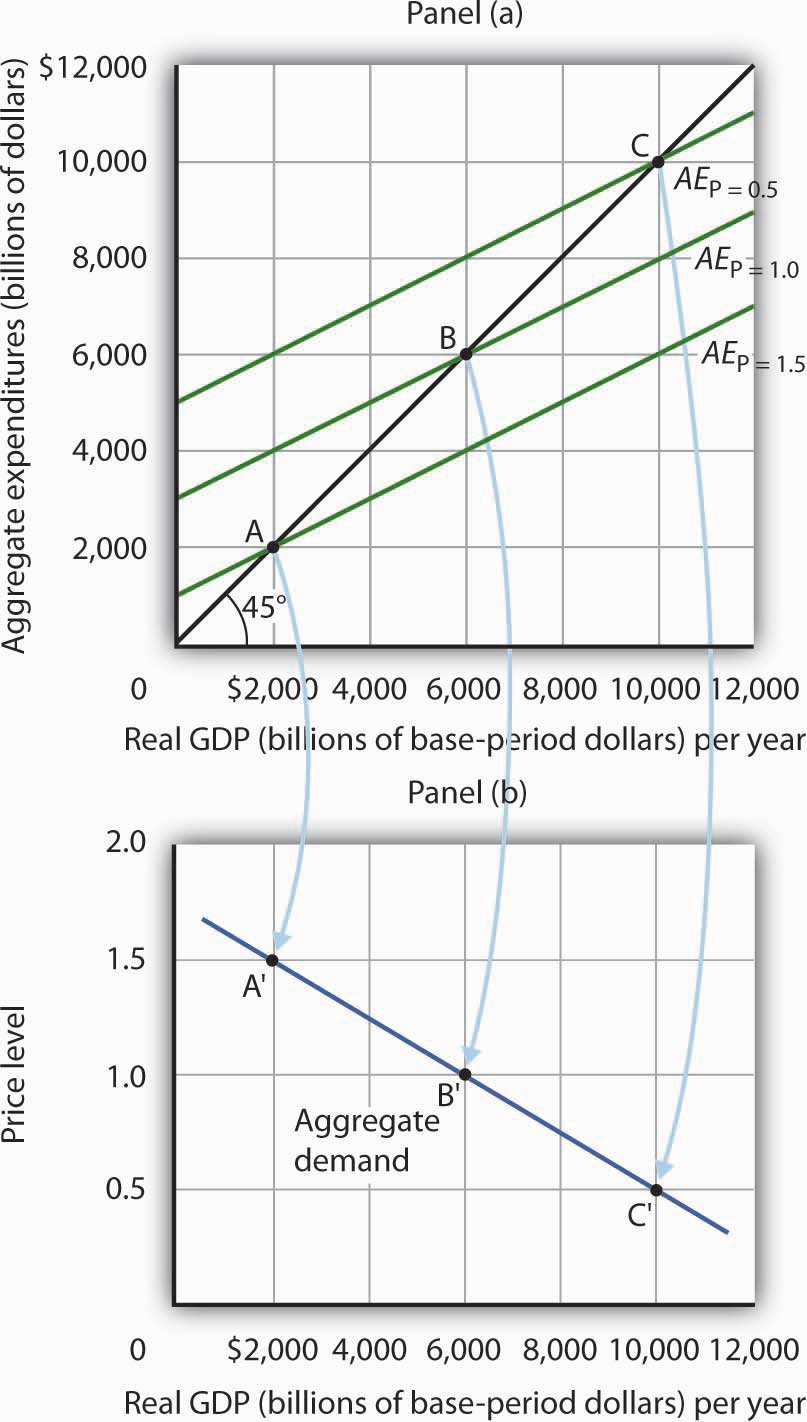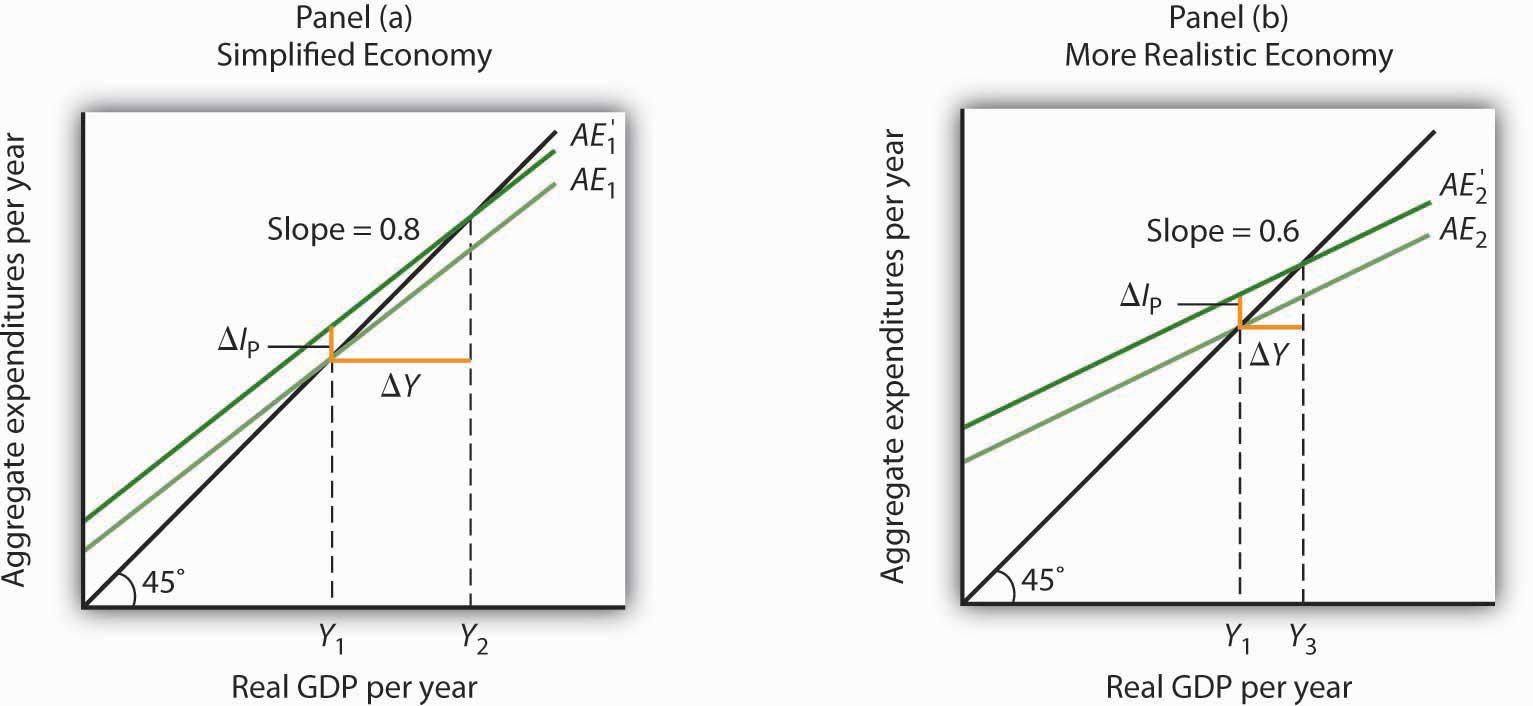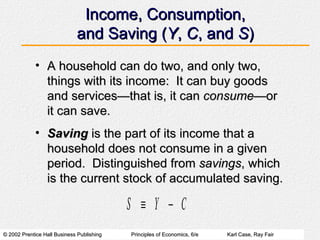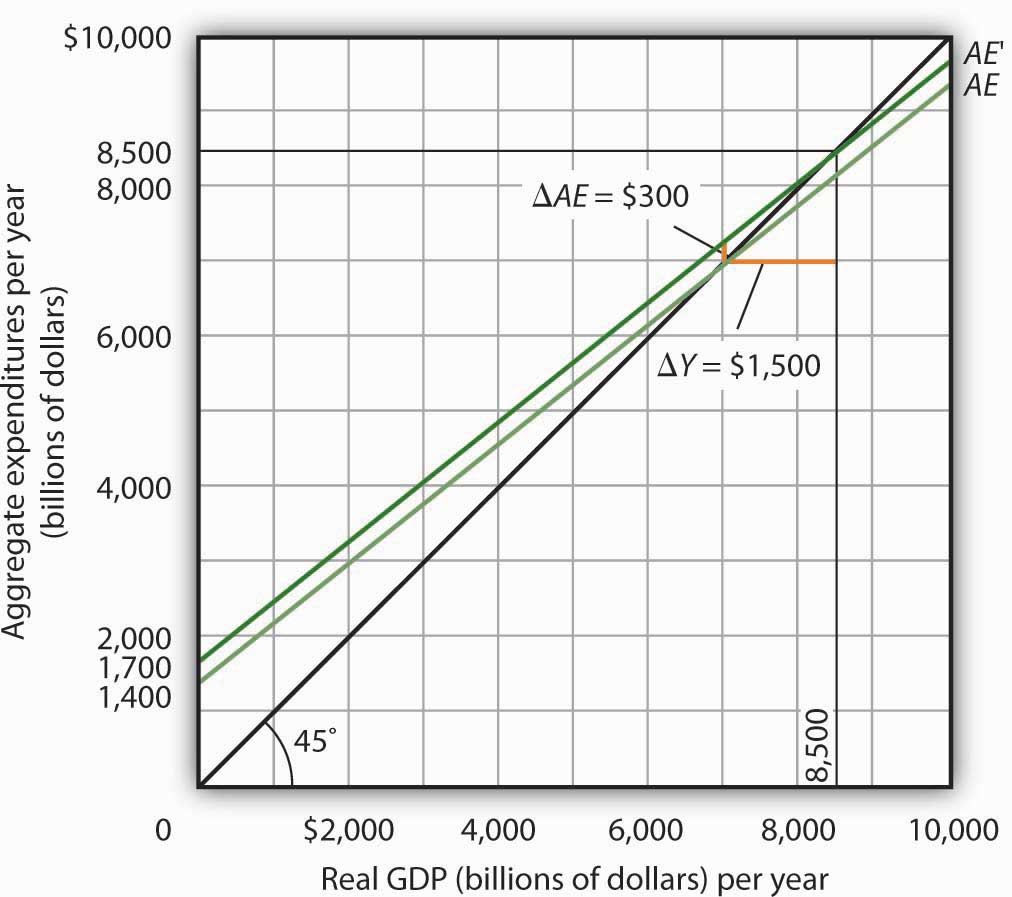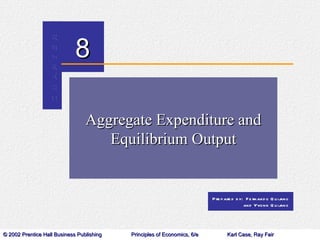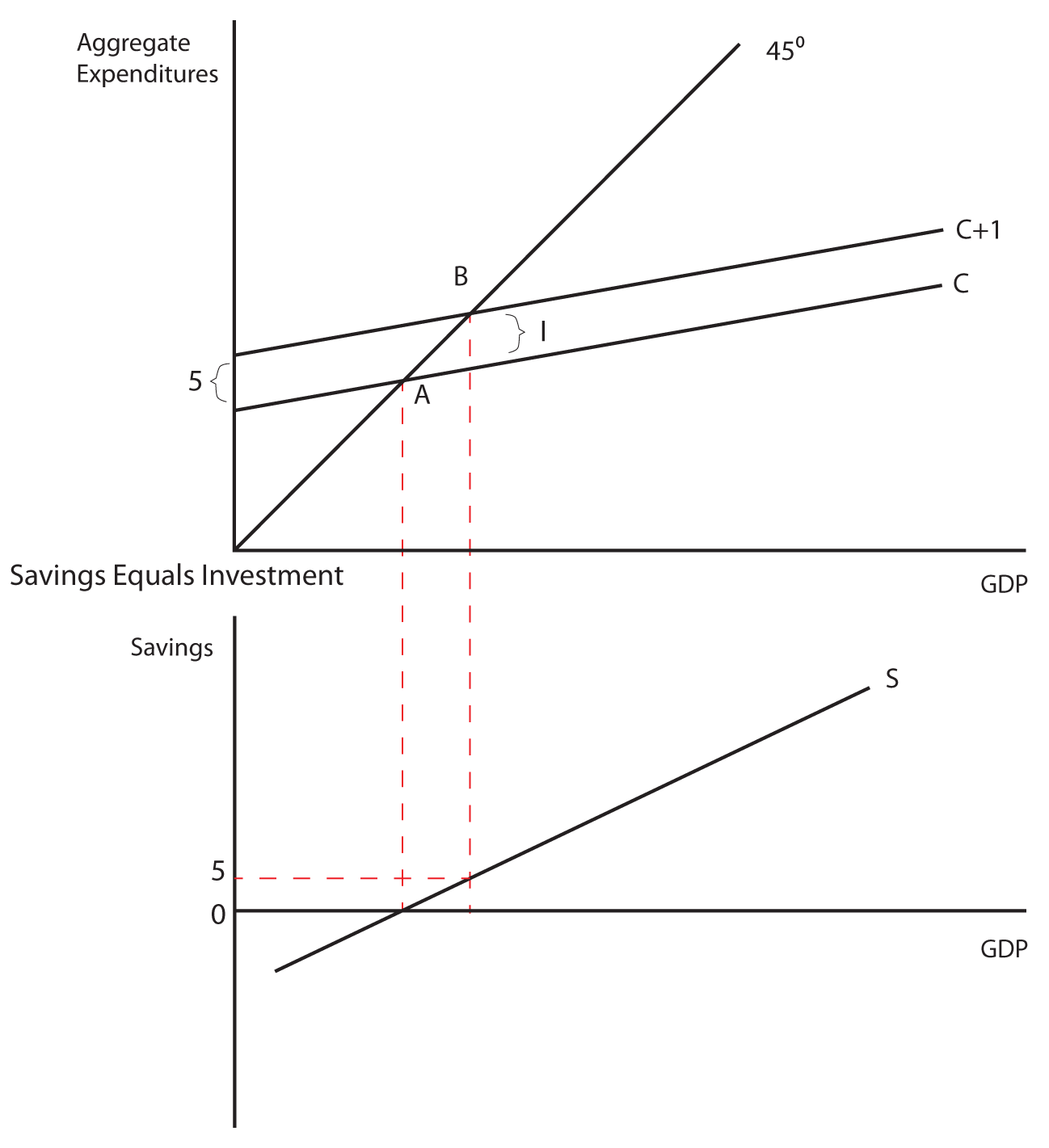Aggregate expenditure is the total amount of money that households, firms, and the government spend on goods and services in an economy. This includes consumer spending, investment spending by firms, and government spending. Equilibrium output, also known as full employment output or potential output, is the level of output produced by an economy when all of its resources are being used efficiently and there is no excess capacity.
In economics, the relationship between aggregate expenditure and equilibrium output is analyzed using the aggregate demand (AD) curve. The AD curve shows the relationship between the price level of goods and services and the quantity of goods and services demanded by households, firms, and the government. As the price level increases, the quantity of goods and services demanded decreases, and vice versa.
The intersection of the AD curve and the aggregate supply (AS) curve determines the equilibrium output of an economy. The AS curve shows the relationship between the price level and the quantity of goods and services that firms are willing and able to produce. When the AD curve intersects the AS curve at a point above the full employment output level, there is excess demand for goods and services, which leads to an increase in the price level and an increase in output. Conversely, when the AD curve intersects the AS curve at a point below the full employment output level, there is excess supply of goods and services, which leads to a decrease in the price level and a decrease in output.
There are several factors that can shift the AD curve. An increase in government spending, for example, will shift the AD curve to the right, resulting in a higher equilibrium output. Similarly, an increase in the level of household income will also shift the AD curve to the right, as households will have more money to spend on goods and services. On the other hand, a decrease in the level of household income will shift the AD curve to the left, resulting in a lower equilibrium output.
It is important to note that while changes in aggregate expenditure can affect the level of equilibrium output, they do not necessarily affect the unemployment rate. The unemployment rate reflects the percentage of the labor force that is not employed but is actively seeking work. An increase in aggregate expenditure may lead to an increase in output and employment, but it could also lead to an increase in the labor force as more people enter the job market.
In conclusion, aggregate expenditure and equilibrium output are closely related concepts in economics. Aggregate expenditure represents the total amount of money spent on goods and services in an economy, while equilibrium output is the level of output produced when all resources are being used efficiently. The AD curve shows the relationship between aggregate expenditure and the price level of goods and services, while the AS curve shows the relationship between the price level and the quantity of goods and services that firms are willing and able to produce. Changes in aggregate expenditure can affect the level of equilibrium output, but they do not necessarily affect the unemployment rate.
